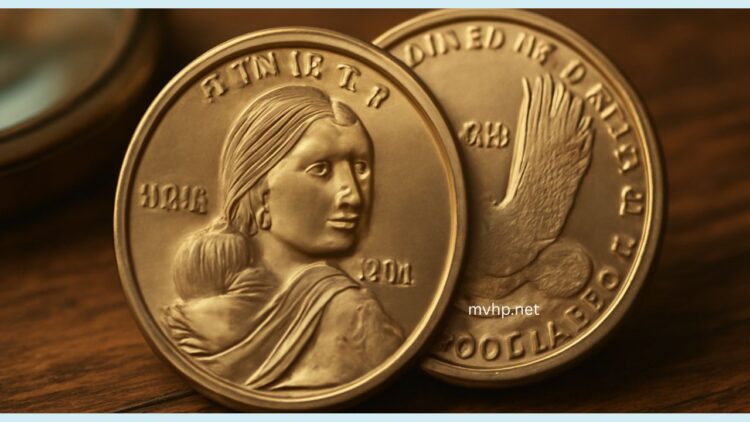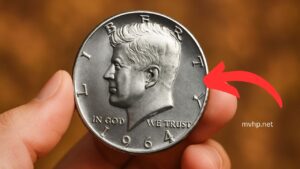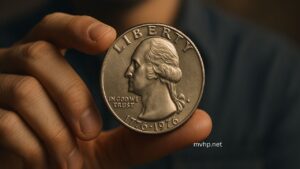If you own a 2000‑P Sacagawea dollar, you might actually be holding a rare error coin—a mule error—that has sold for up to $72,000 (and in top condition, as much as $190,000–194,000). These coins slipped through quality control at the U.S. Mint and became legendary among collectors.
What Is a Mule Error?
In numismatic terms, a mule error occurs when the obverse and reverse dies belong to different denominations. In this case, a Washington quarter obverse is paired with a Sacagawea dollar reverse, both struck on a Sacagawea-sized golden dollar planchet.
This hybrid combination was never intended by the Mint and was discovered only after coins entered circulation .
Why This Mule Coin Became So Valuable
- Extremely rare: Only about 19–20 known examples exist today. Many were recovered and destroyed, leaving only a handful in collector hands .
- Historical significance: First confirmed in May 2000 in Arkansas; authenticated by the Mint in July 2000. Most were melted, but a few escaped into circulation or collectors’ hands ).
- Auction record values: Recent top sales include:
- $192,000 sale in 2018
- $194,000 realized in early 2024 for an MS‑66 specimen
- Other high-end sales between $75,000 and $190,000 depending on grade .
- Collector attention: A private collector currently owns 16 of the known specimens, fueling scarcity and demand .
Key Facts About the 2000‑P Sacagawea Mule Error
| Feature | Detail |
|---|---|
| Obverse | Washington quarter design (George Washington) |
| Reverse | Soaring eagle with 17 stars (Sacagawea dollar) |
| Planchet | Golden dollar‑sized (Sacagawea) |
| Mint Mark | “P” (Philadelphia) |
| Date Placement | “2000” date styled like quarter |
| Known Examples | About 19–20 authenticated coins |
| Detected | May 2000 in Mountain Home, Arkansas |
| Remaining Supply | Most were melted; few escaped |
| Typical Auction Range | $75,000–$100,000 |
| Record Auction | $190,000–$194,000 (MS‑66 coin) |
How to Spot One Yourself
Here’s your checklist:
- Obverse shows George Washington (from a quarter) instead of Sacagawea.
- Reverse displays the Sacagawea eagle and stars.
- Coin is gold‑colored, larger than a quarter, and has a plain edge.
- The mint mark is P, and the date “2000” aligns with quarter styling .
- The coin weighs and feels like a Sacagawea dollar.
- If suspected, do not clean or handle it bare-handed—use gloves and protective holders.
- Submit it to grading services like PCGS or NGC to certify its authenticity and condition .
Realistic Value Range
- Circulated mule errors typically fetch $75,000–$125,000.
- High‑grade examples (MS‑65 to MS‑66) have sold between $172,500 and $194,000.
- Mid‑grade or privately sold coins often fall between $72,000 and $100,000 .
The 2000‑P Sacagawea Dollar mule error is one of the most famous modern U.S. coin mistakes. With only 19–20 authenticated specimens, each one is a collector’s dream—and proven value ranges from $72,000 up to nearly $200,000.
If you own a 2000‑P Sacagawea dollar that looks unusual, especially with Washington’s portrait and a Sacagawea eagle, treat it like gold. It could be a rare numismatic treasure in disguise.
Don’t overlook your coin jar—it might just hold one of these incredible mule error coins.
FAQs
Is the $72,000 valuation real?
Yes—multiple verified examples sold in that range, and recent top-tier specimens have traded for $190,000–$194,000 depending on grade and provenance.
Could this mule coin still be in circulation?
Yes. The original discovery occurred when someone pulled it from a bank roll; a few others slipped past quality controls and may still circulate in drawers or jars.
What should I do if I find one?
Handle it very carefully, avoid cleaning, and submit it to a reputable grading service (e.g. PCGS or NGC) to authenticate its value properly.




